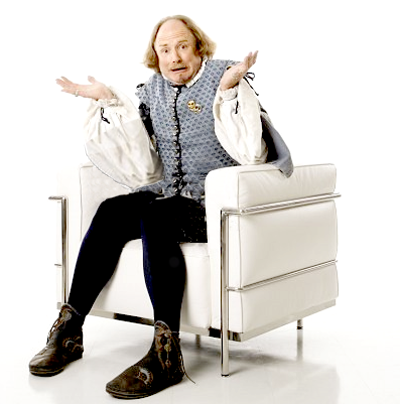 |
CPD Workshop:
|
Traditional academic teaching of counselling and psychotherapy assumes that our discipline is similar to any other subject - whether we are learning history or engineering or psychology, there is a body of knowledge and a range of models that we need to absorb and apply, and that we get examined on in order to achieve our qualification.
And like a 'doctor for the feelings' (or the emotional mind), our work supposedly consists of applying our theoretical understanding to the particular person (or the specific 'case') in front of us, much like a doctor would apply medical understanding and scientific theory.
Whether our theoretical understanding is based on person-centred assumptions of the core conditions, self-actualisation and our own congruent presence, on transactional analysis or CBT assumptions about the client's scripts or schemas, or on psychodynamic assumptions regarding developmental stages, object relations and the transference, supposedly - across the modalities - we are all applying our particular theories to our particular clients.
When characterising different ways of working therapeutically, Freud distinguished different theories and techniques, underpinned by different philosophical assumptions which he called meta-psychology. This idea, that we can describe, circumscribe and categorise therapeutic approaches through their respective meta-psychologies, theories and techniques is still largely taken for granted. However, it does rather imply that the way we choose a technique is in quasi-medical fashion, by rationally, strategically deducing a treatment intervention from our underlying theory and meta-psychology. This implication is based on a 19th-century one-person psychology, ‘medical model’ conception of therapy.
Admittedly, in recognition of the fact that the only tool of our work is our own complex 'self', our discipline distinguishes itself from history or engineering in that we obviously need to develop our own self-awareness, through our own process in therapy, through experiential group work, through continuing self-reflection and supervision. That is why all trainings require self-development and self-awareness.
But in terms of the actual academic element, the assumption is that we learn our theory, particular to our therapeutic approach, with its corresponding models and concepts and assumptions; and out of that theory arises quite logically a particular way of working: a set of interventions and techniques and methods which are designed to apply the underlying theory and make it ‘work’.
And the assumption is that if we - as well-intentioned and empathic practitioners - apply these sets of theories and techniques thoroughly and coherently, the therapy we will end up practising will have the desired effect on our clients.
However, the more we learn and develop and practice our craft, the more we tend to feel that these assumptions do not capture the heart of what we actually do and what we struggle with every day.
For a start, we know - and we are quite explicitly told by our elders - that the therapeutic space does not depend predominantly (let alone exclusively) on quick thinking, assured interventions and a sense of nonchalant certainty. It does not mainly depend on knowledge, skills, clarity and a strategic competence. On the contrary: the therapeutic process appears to become deeper and more effective, the more uncertainty the therapist can allow as a significant feature of the atmosphere and their own inner experience and presence.
And the longer we practice, the more obvious it becomes that any straightforward idea of a linear process, which supposedly takes the client out of the depths of their problem towards the heights of a ‘solution’, is misguided (or at least: severely limited). The idea of such a linear process, as if therapy was a simple journey up a predictable mountain, with the client getting better from session to session until they reach the lofty heights of insight, self-understanding and psychological health, does not match our day-to-day experience in the consulting room – we find that such ideas and ideals of a linear process are actually inhibiting and destructive to what we are trying to do.
Yes, to the unsuspecting public it may seem fairly straightforward to listen actively and empathically like a good friend would, to provide insight and psycho-education, to deliver reassuring and normalising interventions, to take the client through relaxation and mindfulness exercises, to offer cognitive links and interpretations. But in order for any of these offerings and interventions to actually have the desired effect, to reach the client where it matters, to connect with the client's inner world, to link with their 'neuro-plasticity', it is not enough to deliver these interventions and techniques effectively and professionally. As Winnicott observed: it is not mainly the therapist's 'doing' of interpretations, but the therapist's 'being' (which any kind of intervention arises out of) that matters more.
It is at that point that being a therapist stops being straightforward, and becomes a complex vocation, where unlike medicine and engineering we find ourselves in a hall of mirrors, where our own (complex and partially opaque) subjectivity becomes an inexorable part of the job.
When we pay attention to the detail of our ‘being’, our inner experience as therapists moment to moment (especially when we do not just include our stream of consciousness in terms of thoughts and fantasies, but also our whole bodymind experience), we notice it is full of conflict: conflicting feelings, conflicting perceptions, conflicting thoughts, conflicting ideas and therapeutic impulses, conflicting notions of what is going on or what is important, conflicting tendencies towards self-disclosure or not, conflicting theories and interventions which may variously be considered appropriate or not.
To what extent we are or are not aware of these internal conflicts in the therapeutic position, how we relate to that conflicted experience and how we reflect on it, constitutes a significant factor in how deep the therapeutic process can go.
One of the most revolutionary paradigm shifts in the history of psychoanalysis is based upon the following recognition: that it is in processing these conflicts that we discover parallels to the client's conflicts (even though these may be unspoken, unthought and unconscious) which we have absorbed via empathy, through active identification with the client's experience or more passively via projective identification or evacuation on the client’s part.
As Freud observed, although it flies in the face of modern conceptions of individuality and though he did not understand the mechanism by which this occurs, the unconscious of one person can communicate and is linked directly with the unconscious of the other. The laboratory of the therapeutic hour gives us privileged insight into these subtle dimensions of human relationship, in a way that is rare in other contexts.
In attending to our own conflicted experience and subjectivity within the therapeutic position, we recognise manifestations of the client’s unconscious conflicts. For teaching purposes I summarise this recognition as: the client’s conflict becomes the therapist’s conflict.
This is the key insight which constitutes what in the history of psychoanalysis we call the 'countertransference revolution': the recognition that our inner experience as therapists - our countertransference in the widest sense - is not only a disturbing obstacle to our otherwise neutral therapeutic position: it can also be another 'royal road' into the client's inner world and into the heart of the therapeutic encounter. What appears to be - in humanistic terminology - our own 'stuff' (to be taken away and processed in our own therapy or in supervision) is interwoven and interlinked with the client's 'stuff' in a way that cannot be neatly divided apart and segregated and allocated to two separate subjectivities.
This is what two-person psychology and intersubjectivity is all about: we are engaged in a co-created encounter, where we do not have the privilege of a secure, outside position - no fixed point from which we can use some sort of Archimedean lever to maintain neutrality, and to manage and control the therapeutic process when it appears to be going down the plughole. Then our own subjectivity gets involved – this is what Jung has in mind when he says words to the effect: the therapy has not really started until it becomes problematic for the therapist (it is implicitly assumed in this statement that he equates therapy only with those deeper levels of therapy that involve unconscious patterns, developmental wounding and that are aiming at characterological transformation).
When the working alliance breaks down, and the client’s conflict is becoming the therapist’s conflict, there is always a sense that the therapist is losing their therapeutic position. The therapist’s internal sense then is that in some way they are failing, that something ‘bad’ is happening, and in significant ways that feels and is true: something ‘bad’ is happening, usually a re-enactment of the client’s wounding, this time in therapy and via the therapy. The therapist is implicated in the wounding process. When we are caught in such destructive or negative enactments, there is no way out, only a way in: into the depth of the wounding; into - what I like to call - the intersubjective mess. The transformation of the enactment needs to occur from within the dynamic that we feel caught in. What helps us in these moments is not theory or understanding, but to surrender to what these days is called ‘implicit relational knowing’.
In the workshop “How to work when therapy isn’t working”, we will explore ways of enhancing our embodied understanding and our capacity to access such ‘implicit relational knowing’, and to find ways of apprehending the full complexity of the enactment as bodymind process.


Leave A Comment
You must be logged in to post a comment.